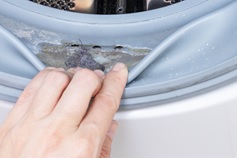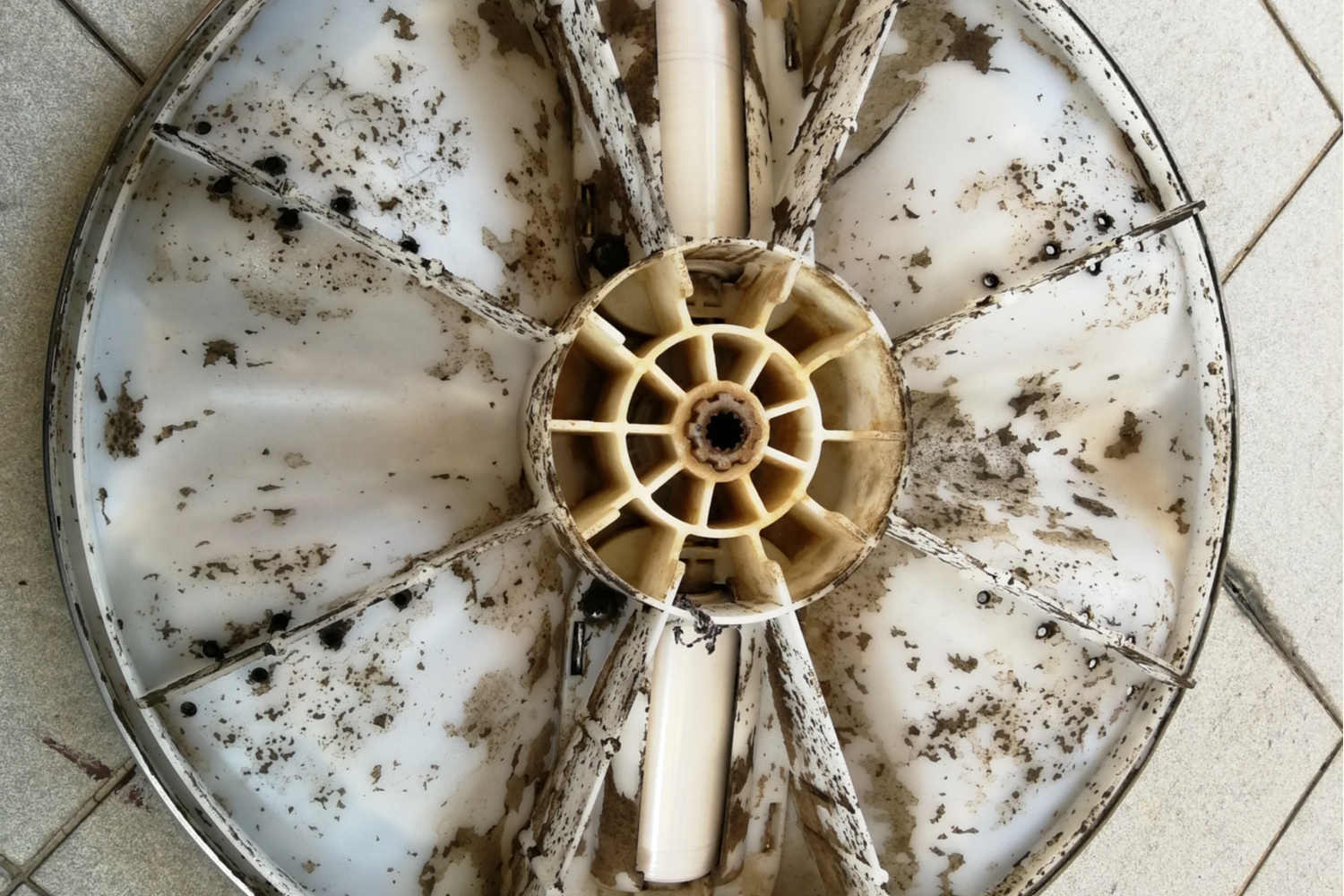Have you ever opened your washing machine door and smelled a funky odor? Or maybe your clothes were cleaner than before but had a strange odor to them? If you have, chances are that mold or maybe mildew may have begun to grow inside the washing machine and causing this odor. Water Mold Fire Restoration can provide you with some handy tips to remove mold from your washing machine and keep it from coming back.
Even when smell is not an issue, you should periodically check the inside of your washing machine for mold and mildew. Keeping your washing machine clean and operating at its peak efficiency is essential to getting your clothes clean and fresh smelling. With only a little extra effort, the right knowledge, and the correct tools, you can always make sure that your clothes come out of your washing machine totally fresh and clean every time.
Is It Mold or Mildew?
There are differences between mold and mildew. They are both fungal infestations that thrive in still air, high humidity or moisture, and an organic food source. Mildew usually appears light gray, yellow, or white in color. It has a fluffy texture and crumbles into a dusty residue when you touch it. Bathroom tubs and showers are mildew’s favorite places to “hang out”.
Mold can be much more of a threat to your family’s health than mildew. Mold comes in a variety of colors from white, to green, to brown and black and virtually every color in between. Mold also has a much stronger musty smell than mildew does. If left unchecked, mold has the potential to cause severe health issues and eventually it will cause physical damage to whatever it I s growing on. Mold infestations can result in illnesses like asthma, coughing, runny noses and watery eyes, and skin rashes. It is incredibly important to remove mold from your environment as quickly as possible.
Washing Machine Mold Removal Tips
Because of mold’s potential to adversely affect your health, you should take these steps to keep any mold from growing inside your washing machine.
1. Clean the Machine Door Seal
Front-loading washing machine doors have a very large gasket that seals in the water. This seal attracts a lot of dirt and mold growth. Use hot, soapy water or a bathroom cleaner to scrub all around the door seal. Several cleaning supply companies also make a special washing machine cleaner that you can use by running the machine through an empty cycle, but elbow grease does a better job. Make sure to pull back the rubber seal when cleaning it to reach the underside.

If you have a top-loading clothes washer, it may not have a rubber door seal. If this is the case, carefully wipe down the lid and both the inside and the outside of the door rim to keep these areas mold-free.
2. Run a Cleaning Cycle
Many newer washing machines have a factory built cleaning cycle manufactured into them. That cycle was put in for a good reason. When running a cleaning cycle on your washer always use the hottest water temperature setting for the longest period time possible for your particular machine. If your clothes washer doesn’t have this self-cleaning cycle, run the machine while it is empty of clothes, using the hottest water possible with 1-2 cups of chlorine bleach added to the water.
3. Clean the Detergent Dispenser
If possible, remove the soap and fabric dispenser basket and wash them thoroughly. Old soap and fabric softeners can provide nutrients for mold. Before placing the soap dispenser back in the machine, be sure to clean the opening that it fits into.
If your machine’s soap dispenser can’t be removed for cleaning, an old toothbrush makes an excellent cleaning tool.
4. Cleaning Front Loaders with Vinegar
White vinegar can solve more than one stinky washing machine issue. (Don’t use apple cider vinegar, only white.) For one, mold dislikes vinegar so vinegar can be used as a mold remover. Second, vinegar, although smelly in its own right, will help eliminate foul odors from your washing machine. And vinegar’s odor will dissipate fairly quickly . Lastly, just as hard water can cause mineral deposits to form in your coffee maker, it will do the same thing to your clothes washer. Vinegar will help dissolve and remove hard water mineral deposits from your machine. If the smell of vinegar is repugnant to you, you can substitute lemon juice. The citricic acid in the lemon juice will work the same way as the vinegar will.
5. All Laundry Detergents Were Not Created Equal
Use a powdered dishwasher enzyme detergent by adding it to your machine and then using the hottest water possible for a full cycle. ½ cup is usually enough for the cycle. If you don’t have an enzyme dishwashing powder, you can create your own solution by adding 3-4 cups of white vinegar and ½ cup of baking soda. Baking soda is another great odor eliminator.
6. Clean Your Washing Machine on a Regular Basis
Proper and regular maintenance is essential for your washing machine whether you have a top loader or front loader. Run the cleaning cycle at least twice a month with a cup of bleach. Never leave wet clothes in your washer for extended periods of time. Move your washed clothing to the dryer when the cleaning cycle is complete. Also, never use your washing machine as a storage facility for damp or wet towels and clothes. Leave the door open in between washings. This will let fresh air in and humidity out.
If you find mold in your home anywhere else besides your washing machine, don’t hesitate to contact Water Mold Fire Restoration at 800-905-0277. Our certified mold remediation teams will safely and completely remove any mold from your home. Our specialists are available 24/7. If you are seeking additional information concerning mold remediation you can also contact us via email at help@watermoldfire.net.








